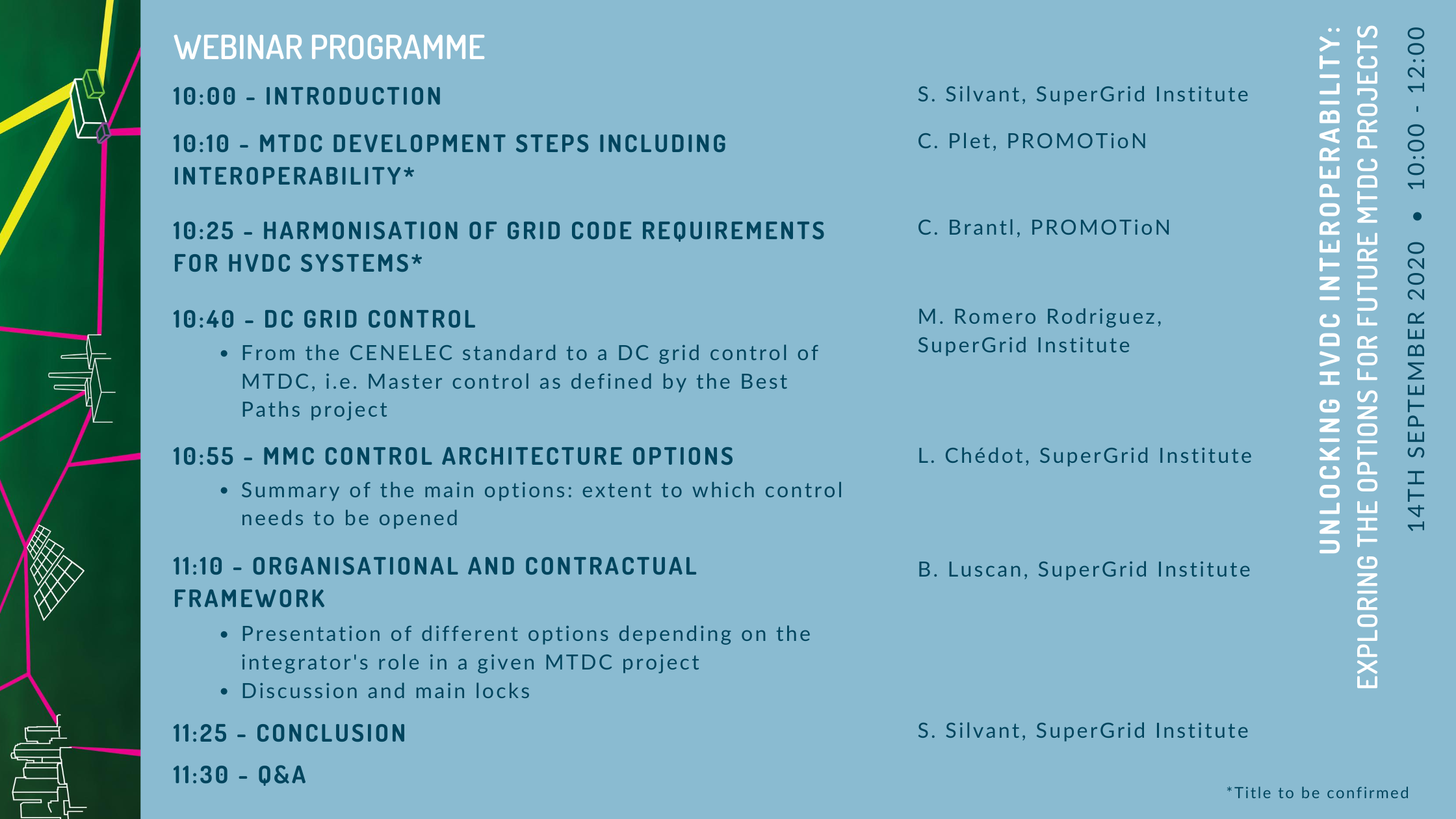[VIDEO & PRESENTATION]
Webinar “Unlocking HVDC interoperability”: organisational and contractual aspects of developing multi-vendor HVDC projects

Thank you to all those who attended our webinar “Unlocking HVDC interoperability: Exploring the options for future MTDC projects” on Monday the 14th of September. This webinar, the first of its kind organised by our institute, co-hosted by the PROMOTioN project, gave rise to very interesting exchanges on a high-stakes, ongoing issue.
Our goal was to share our analysis of interoperability with industry players and present possible directions for moving forward, weighing the pros and cons for each option. We discussed the organisational and contractual aspects of developing multi-vendor HVDC projects, drawing on more technical considerations.
If you missed the webinar, you can watch the video below and download the documents presented in PDF format.
For any additional information, please contact Sébastien Silvant: sebastien.silvant@supergrid-institute.com



